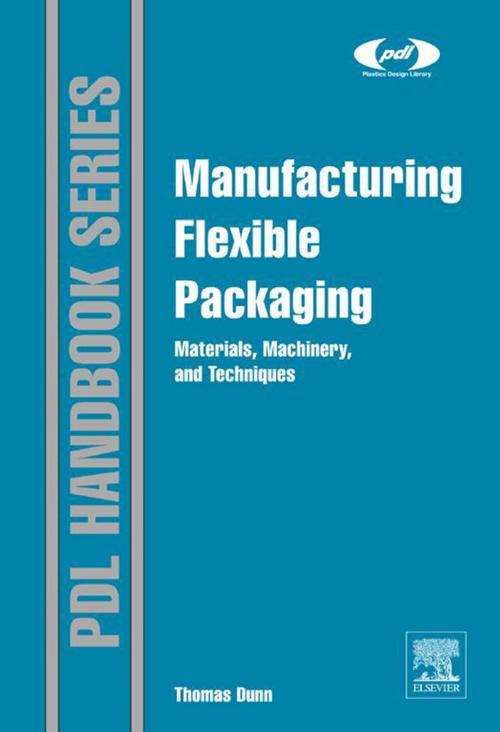Manufacturing Flexible Packaging
Materials, Machinery, and Techniques
Nonfiction, Science & Nature, Technology, Material Science, Business & Finance, Industries & Professions, Insurance| Author: | Thomas Dunn | ISBN: | 9780323265058 |
| Publisher: | Elsevier Science | Publication: | September 4, 2014 |
| Imprint: | William Andrew | Language: | English |
| Author: | Thomas Dunn |
| ISBN: | 9780323265058 |
| Publisher: | Elsevier Science |
| Publication: | September 4, 2014 |
| Imprint: | William Andrew |
| Language: | English |
Efficiently and profitably delivering quality flexible packaging to the marketplace requires designing and manufacturing products that are both "fit-to-use" and "fit-to-make". The engineering function in a flexible packaging enterprise must attend to these dual design challenges.
Flexible Packaging discusses the basic processes used to manufacture flexible packaging products, including rotogravure printing, flexographic printing, adhesive lamination, extrusion lamination/coating; and finishing/slitting. These processes are then related to the machines used to practice them, emphasising the basics of machines’ control systems , and options to minimize wasted time and materials between production jobs.
Raw materials are also considered, including the three basic forms: Rollstock (paper, foil, plastic films); Resin; and Wets (inks, varnishes, primers). Guidance is provided on both material selection, and on adding value through enhancement or modification of the materials’ physical features.
A ‘measures’ section covers both primary material features – such as tensile, elongation, modulus and elastic and plastic regions – and secondary quality characteristics such as seal and bond strengths, coefficient of friction, oxygen barrier and moisture vapour barrier.
- Helps engineers improve existing raw material selection and manufacturing processes for manufacturing functional flexible packaging materials.
- Covers all aspects of delivering high value packaging to the customer – from the raw materials, to the methods of processing them, the machines used to do it, and the measures required to gauge the characteristics of the product.
- Helps engineers to minimize waste and unproductive time in production.
Efficiently and profitably delivering quality flexible packaging to the marketplace requires designing and manufacturing products that are both "fit-to-use" and "fit-to-make". The engineering function in a flexible packaging enterprise must attend to these dual design challenges.
Flexible Packaging discusses the basic processes used to manufacture flexible packaging products, including rotogravure printing, flexographic printing, adhesive lamination, extrusion lamination/coating; and finishing/slitting. These processes are then related to the machines used to practice them, emphasising the basics of machines’ control systems , and options to minimize wasted time and materials between production jobs.
Raw materials are also considered, including the three basic forms: Rollstock (paper, foil, plastic films); Resin; and Wets (inks, varnishes, primers). Guidance is provided on both material selection, and on adding value through enhancement or modification of the materials’ physical features.
A ‘measures’ section covers both primary material features – such as tensile, elongation, modulus and elastic and plastic regions – and secondary quality characteristics such as seal and bond strengths, coefficient of friction, oxygen barrier and moisture vapour barrier.
- Helps engineers improve existing raw material selection and manufacturing processes for manufacturing functional flexible packaging materials.
- Covers all aspects of delivering high value packaging to the customer – from the raw materials, to the methods of processing them, the machines used to do it, and the measures required to gauge the characteristics of the product.
- Helps engineers to minimize waste and unproductive time in production.















